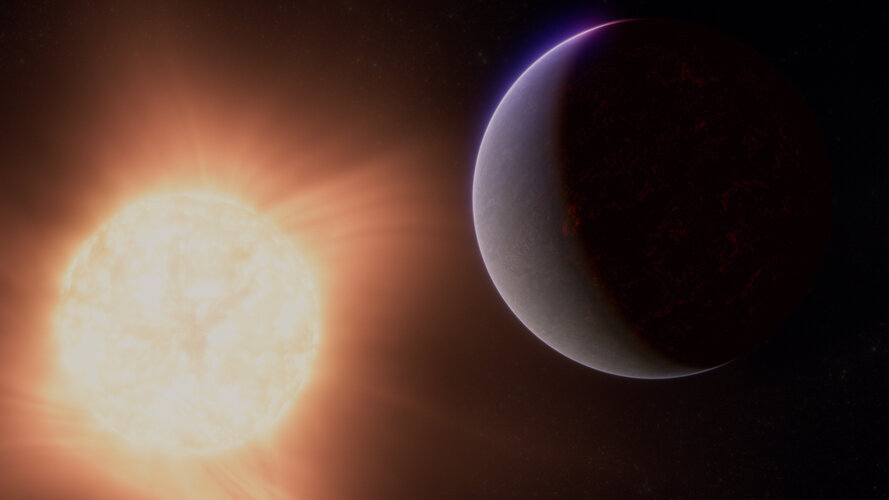Bubbling magma ocean
The team thinks that the gases blanketing 55 Cancri e would be bubbling out from the interior, rather than being present since the planet’s formation. “The primary atmosphere would be long gone because of the high temperature and intense radiation from the star,” said Aaron. “This would be a secondary atmosphere that is continuously replenished by the magma ocean. Magma is not only crystals and liquid rock, there’s a lot of dissolved gas in it, too.”
In all likelihood, any atmosphere surrounding the planet would be more complex and quite variable as a result of interactions with the magma ocean. In addition to carbon monoxide or carbon dioxide, there could be gases like nitrogen, water vapour, sulphur dioxide, some vaporised rock, and even short-lived clouds made of tiny droplets of lava condensed from the air.
While 55 Cancri e is far too hot to be habitable, researchers think it could provide a unique window for studying interactions between the atmospheres, surfaces and interiors of rocky planets, and perhaps provide insights into the early Earth, Venus and Mars, which are thought to have been covered in magma oceans in the past. “Ultimately, we want to understand what conditions make it possible for a rocky planet to sustain a gas-rich atmosphere, a key ingredient for a habitable planet,” said Renyu.
This research was conducted as part of Webb’s General Observers (GO) Program 1952. Analysis of additional secondary eclipse observations of 55 Cancri e are currently in progress. In the future, the team hopes to capture a full phase curve with Webb in order to map temperature differences from one side of the planet to the other, to get a better sense of the planet’s weather, climate and more detailed atmospheric conditions.
More information
Webb is the largest, most powerful telescope ever launched into space. Under an international collaboration agreement, ESA provided the telescope’s launch service, using the Ariane 5 launch vehicle. Working with partners, ESA was responsible for the development and qualification of Ariane 5 adaptations for the Webb mission and for the procurement of the launch service by Arianespace. ESA also provided the workhorse spectrograph NIRSpec and 50% of the mid-infrared instrument MIRI, which was designed and built by a consortium of nationally funded European Institutes (The MIRI European Consortium) in partnership with JPL and the University of Arizona.
Webb is an international partnership between NASA, ESA and the Canadian Space Agency (CSA).
Contact:
ESA Media relations



